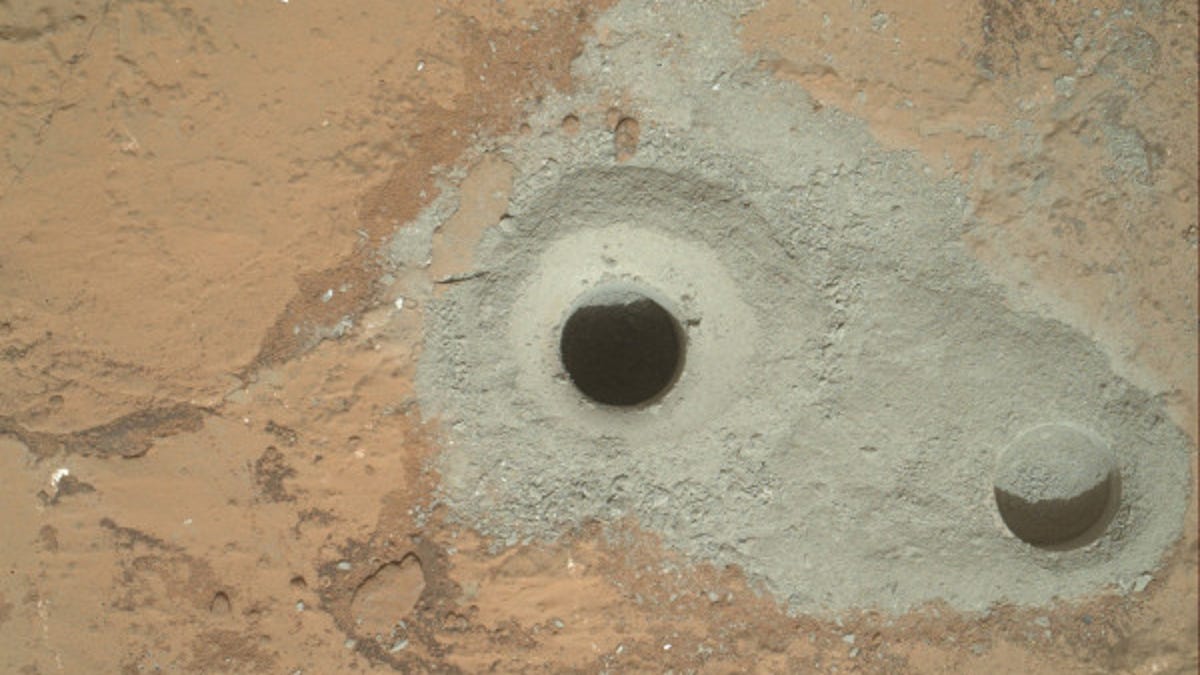Curiosity findings show 2 percent of Mars soil contains water
The first analysis of soil dug up by the Curiosity rover reveals new insights into the red planet's propensity for retaining water beneath its surface.

After examining fine-grained soil particles extracted by the Curiosity rover from beneath the surface of Mars, scientists have concluded that roughly 2 percent of the Martian surface soil is made up of water. While showing no indication of organic material besides Earth-transported microbes, the results bode well for future manned missions to Mars, wherein astronauts could mine the soil for water, and advance scientists' understanding of Mars' history.
The findings, published Thursday in the journal Science, are part of one article in a five-paper special section on the Curiosity mission that began in August 2012. "One of the most exciting results from this very first solid sample ingested by Curiosity is the high percentage of water in the soil," lead author Laurie Leshin, dean of the School Science at Rensselaer Polytechnic Institute, said in a NASA press release.
The tool Curiosity used to analyze the sample was a collection of instruments called Sample Analysis at Mars, or SAM, that contains a gas chromatograph, a mass spectrometer, and a tunable laser spectrometer.
The rover first scooped up dirt, dust, and finely grained soil from a 2.5-inch-deep hole it dug in a patch of Mars' soil referred to as Rocknest back in February. Then a tiny, pill-size portion of the sample was fed into SAM, where it was heated to 1,535 degrees Fahrenheit.
The gases that were released -- which included significant portions of carbon dioxide, oxygen, and sulfur compounds -- were analyzed, and gaseous carbonite was found in a quantity that suggests the water presence in Martian soil.
"This work not only demonstrates that SAM is working beautifully on Mars, but also shows how SAM fits into Curiosity's powerful and comprehensive suite of scientific instruments," said Paul Mahaffy, a lead investigator for SAM at NASA's Goddard Space Flight Center.
These findings come on the heels of disheartening news last week that Curiosity has yet to crack the methane mystery that has persisted around Mars since 2003, when scientists observed methane plumes and the public and professional interest in finding life on the red planet soared.
The lack of methane thus far indicates that the rover has little chance of finding active microbial life on the planet, but the existence of water in such great quantities in the surface soil brings scientists one step closer to piecing together the planet's past potential for harboring life.
"By combining analyses of water and other volatiles from SAM with mineralogical, chemical, and geological data from Curiosity's other instruments, we have the most comprehensive information ever obtained on Martian surface fines," added Mahaffy. "These data greatly advance our understanding surface processes and the action of water on Mars."
Given the renewed interest of late in manned missions to Mars -- from nonprofit organizations like Mars One, privatized transportation companies like SpaceX, and the unofficial plans in the works over at NASA -- these findings are reassuring. Leshin confirmed a cubic foot of soil, as opposed to the tiny sample Curiosity analyzed, could yield nearly 2 pints of condensation when heated.

